Gastronomy of SONORA
Typical Food of SONORA
The gastronomy of Sonora is renowned for its delicious food. While meat is a popular dish in the region, the cuisine of Sonora offers so much more than that. The origin of Sonoran cuisine is a combination of native techniques and European influence that dates back centuries ago. Wheat and beef, imported by the Spanish, are now staple foods that summarize the gastronomic customs of Sonora. Corn, beans, zucchini, green or red chili, and the chiltepin are also commonly used in Sonoran cuisine.
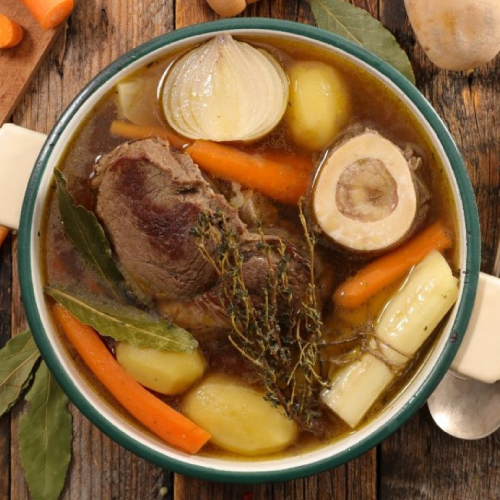
The first inhabitants of Sonora practiced hunting wild species, which were mostly converted into food. However, products derived from livestock became the allegorical image par excellence of Sonoran food. Wheat was initially sown in the Jesuit missions for the making of hosts and the celebration of the Eucharist. Eventually, it found its way to the north of Mexico. Our ancestors, unaccustomed to loaves, invented a way of eating wheat that was more in keeping with their customs: the flour tortilla. Roasts made by the criollos and missionaries were also adopted by the indigenous people, who added their own touch.
Sonora’s geographical situation from centuries ago is important to consider when analyzing the region’s cuisine. Before urbanization, Sonora was a vast territory with a lot of uninhabited land and a very hot, dry climate. Therefore, the simplicity of the products, seasonings, presentation of dishes, and cooking methods was necessary, leading to the formation of a peculiar cuisine that is intensely peasant and strongly constrained by an arid climate and the little diversity in the production of food. As a result, the food of Sonoran towns prepared in a strongly rural context has a unique and incomparable flavor.
Sonoran cuisine features a variety of dishes, including roast beef, shredded beef with potatoes, burritos made with flour tortillas, beef with chili, beef chorizo, machaca, and beef jerky. Tamales, which can be found with meat, sweet corn, salty corn, and other derivatives of typical Mexican cuisine, such as gorditas with meat, sopes, golden tacos, flautas, chimichangas, enchiladas, pozole, and menudo are also popular. Soups such as beef broth, meatballs, vegetables, stew, pint chicken, quelite broth, shrimp soup, and other seafood are also part of Sonoran cuisine. Seafood dishes made with shrimp, fish, octopus, oysters, among others, are also common.
For dessert, Sonoran cuisine offers sweet bread, jamoncillo, pipitoria, cajeta sweets, corn cake, rice pudding, empanadas with different fillings, the famous town coyotas, and pitahaya snow. Drinks such as bacanora, one of the most representative and highest produced drinks in the region, are also popular.
Sonoran cuisine is a unique blend of native techniques and European influence that has been shaped by the region’s geographical situation and climate. The cuisine features a variety of dishes, from meat to seafood to dessert, that offer a glimpse into the rich culinary history and tradition of Sonora. Whether you’re a local or a foreigner, Sonoran cuisine is a must-try if you’re ever in the region.
Typical Dishes of SONORA
Frijoles maneados (Maneado beans)
This is one of the most popular dishes in Sonora. The preparation of this dish involves frying the beans in lard or oil until they are crispy, and then crushing them in the pan to form a creamy sauce. The locals prefer to add any type of greasy cheese to the mixture to give it a rich and creamy consistency.
The color of the sauce depends on the type of chilies used in the preparation, with Anaheim chilies being the most recommended. Maneado Beans are often served with fried tortillas or snacks and are traditionally eaten alone or accompanied by roast meat, scrambled eggs, or machaca.
Chimichanga
This dish is a popular fast food item that has its origins in the city of Obregón in the 1980s. The Chimichanga is a flour-based tortilla filled with shredded meat, which is then given a square or rectangular shape. The tortilla is then fried in oil or lard and served with a sauce made from chopped tomatoes, chiltepin, chili, and coriander. Some people also add beans and cheese to the surface of the dish.
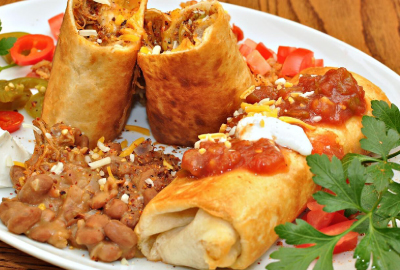
The thickness of the Chimichanga in Sonora is equivalent to three sheets of newspaper, while the size is that of a large pizza folded rectangularly. The Chimichanga is one of the most famous dishes in Sonora and California, with each state having its own unique preparation. In Sonora, Chimichangas are prepared using a thin and long wheat tortilla that contains a meat stew made from shredded and ground meat, chicken, and beans.
Cheese and rice can also be added to the dish based on the diner’s preference. The tortillas are folded into rectangular shapes, fried in oil or lard, and served on a plate with cheese on top. The dish is typically accompanied by guacamole on the side and sour cream or hot sauce. Chimichangas are eaten throughout the year and are a common dish on the Sonoran table.
If you want to taste the best of Sonoran cuisine, you can visit one of the many Mexican restaurants that serve these iconic dishes. It is important to remember that what differentiates a Chimichanga from a “burrito” is that the former is fried, giving it a unique texture and flavor. So, the next time you visit Sonora or a Mexican restaurant, do not hesitate to try these mouth-watering delicacies and savor the flavors of this beautiful region.
Machaca
Let’s start with machaca, a dish that has been present in Sonora long before the arrival of the Spanish. Originally, machaca was prepared with only dried meat and salt. The natives used this technique to preserve the meat and carry it with them during long journeys.
Nowadays, machaca is made with beef, venison, turtle, or fish, and it is a key ingredient in many typical dishes of Sonora, such as burritos, machaca broth, machaca with vegetables, and machaca with eggs. In Hermosillo, the capital city of Sonora, you can find many places where they prepare this delicious and traditional dish.
Wakabaki
One of the most iconic dishes in Sonora is the wakabaki. This beef rib soup is traditionally cooked over firewood by the Yaqui ethnic group and is served with a variety of vegetables, such as green beans, pumpkin, carrots, potatoes, chickpeas, cabbage, and corn. The name “wakabaki” comes from the Maya language and means “cooked cow”. This dish is usually reserved for special occasions such as patron saint festivities, weddings, bowling, novenas, and the Day of the Dead. Although it is commonly known as “cocido” in many food places in Sonora, the wakabaki has a unique flavor that sets it apart from other beef soups.
Cahuamanta
This dish originally used the meat of the loggerhead turtle (“Caguama” turtle), a species that is now protected due to the risk of extinction. As a result, the main ingredient has been replaced by manta ray meat and shrimp. The cahuamanta is usually served as a soup or stew, which includes tomatoes, chili, celery, carrots, and spices.
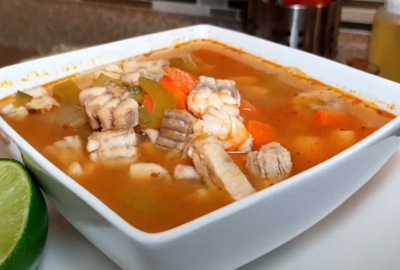
The sauce is prepared by blending the tomatoes and spices, and then cooked with the vegetables and meat until the manta ray is soft. This dish can also be served as a taco filling and is usually accompanied by cabbage, sauce, and chopped onion. The cahuamanta is a dish with a rich history that reflects the cultural and culinary diversity of Sonora.
The name “cahuamanta” is a fusion of the words “Caguama” and “Manta ray”, and its flavor is a testament to the ingenuity of the people of Sonora who have adapted their cuisine to changing circumstances. This dish is a symbol of the resourcefulness and resilience of the people of Sonora, who have managed to preserve their culinary traditions despite the challenges of modernity.
Dogos or Sonora-Style Hot Dogs
Dogos are Sonora’s answer to the classic American hot dog. This dish became popular in the 1980s and has since become a staple of Sonoran cuisine. The hot dog sausage is made from beef and finely chopped bacon, and is topped with a variety of ingredients that give it a unique and delicious flavor.
Among the ingredients that are commonly added to dogos are tomatoes, chorizo, beans, chopped jalapeño peppers, caramelized white onion, guacamole, pickles, cheese, and mayonnaise, as well as different sauces that vary according to the place and the customer’s preferences. Some dogos even include mushrooms or other vegetables. The hot dog is served on a soft and fluffy bun, and is a filling and satisfying meal that can be enjoyed at any time of the day.
The sauces used to accompany the hot dogs can vary from place to place and customer to customer, and sometimes corn or mushrooms are added as well. The Sonoran version of hot dogs became popular in the 1980s and has since become a staple of the local street food scene.
Charcoal Roast Beef Tacos
One of the most popular dishes in Sonora is the carne asada al Carbón tacos. This specialty is a must-try for anyone visiting the region. The tortillas used for these tacos are made with flour, and the meat is typically cut from fajilla, arrachera, rib eye, agujos, and cabrería. The quality of Sonoran cattle is unparalleled, and it brings a unique flavor to these tacos.
To prepare this dish, the meat is roasted over charcoal, giving it a smoky and rich flavor. The cambray onion is also roasted over charcoal and served alongside the tacos. This dish is usually eaten on holidays and at family gatherings throughout the year. To add more flavor, Sonorans use lemon, salt, and a variety of sauces originating from Mexico.
Beef Head Tacos
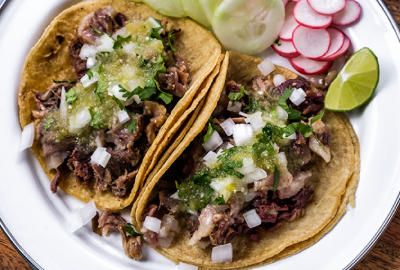
Another unique dish of Sonora is the head tacos. Also known as beef head, this dish is a delicacy in the state’s cuisine. The main ingredients for this dish are beef, onion, tomatoes, chilies, garlic, chicken stock, and wheat tortillas. The head of beef is cooked in a pot with the other ingredients until it’s ready. The meat is then cut into small pieces and served in tortillas with a little sauce and cilantro.
Sonorans have a peculiar way of preparing beef head, which involves an underground oven cooking process, cooking it slowly to perfection. This dish is available throughout the year, and you can find it in many restaurants and taco shops in Hermosillo, Obregón, Guaymas, and many other cities in Sonora.
Cebocitos Tacos
Cebocitos tacos are another typical dish of Sonora that you should not miss. This dish is usually eaten with the hands, and the juicy, tender meat is grilled and stuffed into wheat tortillas with tomato juice. You will find this dish in many restaurants and street stalls, especially in the capital city of Hermosillo.
The cebocitos tacos are filled with meat and various sauces, some of which can be spicy if you ask for it. You can add a touch of lemon, lettuce, onion, or cucumber to enhance the flavors. This dish is a favorite among Sonorans and can be enjoyed at any time of the year.
Beef “chorizo”
This savory sausage has been a staple of Sonoran cuisine since the time of the conquest. The Spanish taught the native inhabitants how to prepare it, and over the centuries, it has evolved to include local spices and seasonings.
To make beef chorizo, you must mix ground beef with paprika and garlic, along with other spices and dried casing for stuffing. Let the mixture sit in the refrigerator for at least 24 hours before stuffing it into the casings to make the sausages. Beef chorizo is usually served with potatoes and is a popular dish throughout the state.
Sonora-style Menudo
Menudo is a hearty soup that has a long history dating back to the late 19th century and the early 20th century. Originally, it was a dish served to peasants during times of war, as they were provided with the leftover internal organs of cattle, which were not deemed suitable for the military. Over time, the dish evolved and became a popular delicacy, especially during the cold season, Christmas, and New Year’s Day.
The Sonoran version of the soup is made with beef belly, which is slow-cooked with precooked pozole corn, cilantro, lemon juice, bay leaf, salt, pepper, crushed red chili, oregano, and onion. In Sonora and Sinaloa, white menudo, which is served with chiltepin, is a popular variation of the dish. Many people consume menudo to counteract the effects of a hangover, making it a favorite dish among the locals.
Camarones a la Diabla (Spicy shrimps)
It translates to “Deviled Shrimp,” is a dish that is found not only in Sonora but also in Sinaloa. The exact origins of this dish are not known, but it is believed to have its roots in the Caribbean or some part of Mexico. The dish is a perfect blend of spicy Mexican flavors with the richness of seafood. The dish is made by cooking headless shrimp in water, oil, or butter.
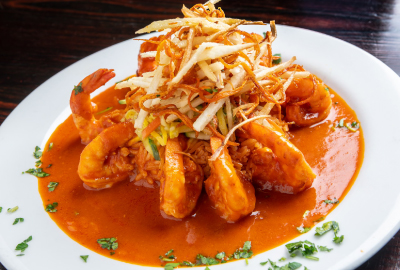
To this, a ketchup-based sauce that contains marinated chipotle chili peppers and orange juice is added. For those who prefer to skip the ketchup, mashed potatoes with cream make an excellent alternative. For a variation, you can use ancho chili instead of chipotle peppers and add white wine instead of orange juice. This dish is best enjoyed with a cold beer and is usually found in coastal areas.
To prepare the dish, the first step is to make the “salsa diabla” (devil sauce). In a casserole, cook all the ingredients except the shrimp until they boil. Once cooked, blend the ingredients and add the shrimp. Cook again for a few minutes until the sauce thickens. The final result is a deliciously spicy shrimp dish that can be served with white rice and sliced avocado. Tortillas also make for an excellent accompaniment.
“Tostadas” with Meat.
Tostadas or tortillas are a staple food item in Mexico and are commonly used as a base for a wide range of toppings. In Sonora, tostadas are usually made with cornmeal and fried to give them a crispy texture. They are often referred to as fast food due to the ease with which they can be prepared. One of the most popular variations of tostadas in Mexico is meat tostadas, which are typically served with slices of avocado, onion, and lettuce.
To prepare the tostadas, the dough is first prepared with cornmeal and water, made into balls, and then flattened into tortillas. These tortillas are then fried until golden brown. Once ready, the tostadas can be topped with different types of meat, shellfish, fish, beans, and chicken. Guacamole makes for an excellent side dish to complement the flavors of the meat.
Gallina pinta (Pint hen)
One of the most iconic dishes of Sonora is the gallina pinta, or pint hen. Although its origins are uncertain, it is widely believed to have originated in the Sonoran mountains. This hearty stew is made with beef, pinto beans, and corn kernels, which give it its distinctive color. Despite its name, there is no actual chicken in this dish. It is a popular staple in Sonoran cuisine and can be found in many restaurants in the state, especially in Hermosillo.
To prepare gallina pinta, you must soak the beans one day in advance and then cook them with the meat until they are soft. Next, you add onion, garlic, green chilies, and pozole corn to the pot and cook it half-covered for an hour over medium heat. The result is a rich and flavorful stew that is sure to warm you up on a chilly day.
Cachoreadas
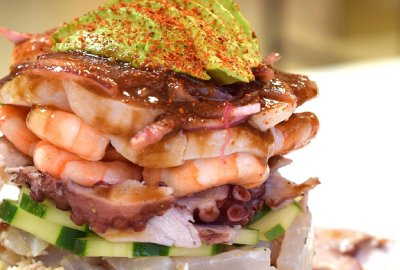
Cachoreadas are a typical seafood dish from Sonora, consisting of giant shrimp, crab, and octopus served cold in a marinade similar to ceviche, accompanied by lemon juice, onion, tomato, and avocado, all on a crispy corn toast. This dish can also be topped with Sonora or chiltepin sauce, and some people prefer to add sliced onion and avocado on top.
One of the best places to taste cachoreadas is in Hermosillo, the capital city of Sonora. However, this dish can be found throughout the state, particularly in coastal areas such as Puerto Peñasco and San Carlos. Cachoreadas are a versatile dish that can be enjoyed year-round, and they reflect the abundance and diversity of the seafood that can be found in the Sea of Cortez.
Cheese broth
Originally from the city of Álamos, this soup is now popular throughout the state. The recipe calls for fresh cheese, tomatoes, potatoes, chicken broth, chilaca pepper, pepper, and salt. The cheese used in this dish comes from the ranches of Sonora and is a key ingredient in its rich and creamy broth. It is usually served with tortilla chips or tortillas.
To make cheese broth, you need to sauté chili peppers and potatoes in vegetable oil before adding chicken stock and cheese. Be sure to use fresh cheese to prevent it from melting in the broth. Once the potatoes are soft, season the soup with salt and pepper and add a little milk if desired. The result is a comforting and delicious soup that is perfect for any occasion.
Typical Drinks of SONORA
Bacanora
Bacanora is an alcoholic drink that has been the typical drink of Sonora for over 300 years. It is made from the fermentation and distillation of the yaqui-type agave plant, which is only found in the Sonoran mountains. The process of making bacanora is similar to that of tequila, and the resulting drink has an alcohol content that varies between 38% and 55%.
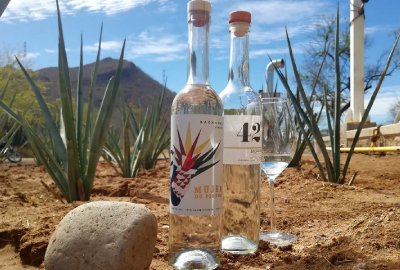
The name “Bacanora” comes from the language spoken by the Ópatas ethnic group, and it is also the name of one of the 72 municipalities of the state. For many years, bacanora was prohibited by the Mexican government, and its production and distribution were illegal. It was only in 1992 that its production and distribution were regularized, and in the year 2000, the Mexican Property Institute granted recognition to 34 states to make this tasty distillate.
Bacanora has a whitish or slightly yellowish tone, and to distinguish the original liquor from the copies, you must be aware that the bottle label says “Bacanora 100% agave.” Unlike tequila, bacanora has more alcohol and is sweeter. Although its production was commercialized, the drink is still made by hand in the Sonoran mountains, under a careful procedure similar to that carried out with mezcal and tequila.
Farmers, workers, and other workers, including rulers, have made bacanora their favorite drink. It is believed to stimulate the appetite and to be an excellent digestive. If you shake the bottle and the bubbles do not disappear quickly, it is a sign of a quality product.
Coconut horchata
Coconut horchata is a refreshing drink typical in Sonora. While the main ingredient for horchata in Mexico is rice, Sonorans add grated coconut to counteract the effects of heat. This drink is commonly consumed with burritos, and street stalls in Obregón offer refreshing coconut horchata to quench your thirst. The typical ingredients used in this beverage include rice, grated coconut, cinnamon, sugar, water, and ice.
Colonche
Colonche is a pre-Hispanic drink that is not consumed as frequently in Sonora as some other traditional drinks. However, it is still worth trying if you are visiting the state. This fermented beverage is made from tuna cardona juice and is said to have medicinal properties for treating lung diseases. The amount of sugar added to the preparation can affect the level of sweetness in the drink.
Charanda
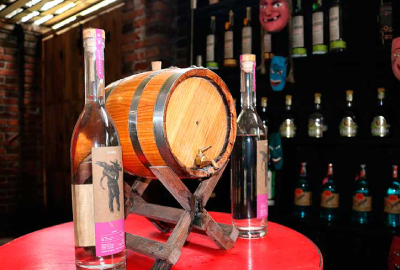
Charanda is a typical alcoholic drink from Sonora, similar to aguardiente, that has gained international recognition for its rich flavor. However, it is originally from Michoacán, where its production began after the prohibition of the chinguirito, the drink considered the “father” of charanda. Sonora, Coahuila, and Chihuahua started the production of charanda despite the ban, and it became part of the tradition of each state where it was prepared.
Charanda is made from cane juice or its derivatives, such as brown sugar and molasses, and it can be mixed with different flavors of juices, soft drinks, or other liquors. The sugar canes used in the preparation of this liquor are mainly located in Uruapan, at about 1,600 to 3,800 meters above sea level, near dormant volcanoes, which makes for greater production of sugar canes.
It is essential to note that Charanda is a sweet liquor, and it can make you drunk faster than normal, so it should be consumed with caution. Although it is a craft product, it is not in high demand in the country’s shops. However, you can easily find it at any kiosk or store that sells artisanal liquors in the region.
Sotol
Sotol is a typical Sonoran drink that is made from the lower or bottom part of the mezcalero maguey, specifically from the Dasylirion wheeleri. This alcoholic beverage undergoes a fermentation process followed by two distillations, producing an alcohol content ranging between 38 and 45 °. The production of sotol is still done by hand, and it is considered to be between tequila and mezcal in terms of distillate.
The drink is prepared in underground wood ovens and was historically used in the rituals and ceremonies of the ethnic groups in the northern part of Mexico. Sotol is one of those ancestral and wild drinks with soft notes that make it a favorite among locals and visitors alike.
Tepache
Tepache is one of the traditional drinks of Sonora, made from slightly fermented pineapple, piloncillo, and a stick of cinnamon. The word “tepache” comes from Nahuatl and means “drink made of corn.” The Mayans used to make this drink for ceremonies and celebrations, adding pineapple and aromatic herbs to the mix.
Although the traditional preparation of tepache is made with pineapples, you can use other fruits such as orange and apple. Indigenous communities still prepare this pre-Hispanic drink with corn in Sonora and in other states of the Republic.
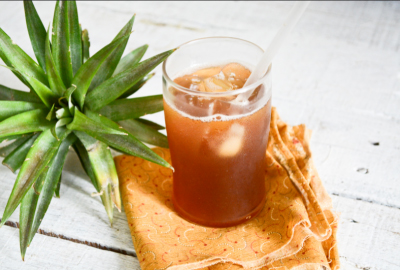
Tepache has a very low alcoholic strength of just 1%, which is why it is drunk from youngsters to adults throughout the year. The flavor of the drink will depend on how long the pineapple juice ferments. Generally, it is sweet due to the piloncillo and with the acidic touch of the pineapple, which is pleasant to the palate.
To prepare tepache, dissolve the piloncillo in water and add the chopped pineapple and the cinnamon stick. Then, let it rest for 36 hours without stirring, and check if it has foam on the sides. If it does, your drink has fermented, and you can enjoy it. If not, let it rest for another day.
Tepache is also produced by indigenous communities from Sinaloa, Yucatán, Campeche, Chiapas, Quintana Roo, Baja California, among others. In the streets of Sonora, especially in Hermosillo, you will find artisan vendors selling this refreshing drink.
Pumpkin atole
This refreshing drink is usually prepared with flour, water, and boiling milk, which are heated until they reach a certain viscosity. In many parts of America, aromatic spices such as cocoa, vanilla, and cinnamon are added to enhance the flavor. Additionally, fruit flavors like strawberry, pumpkin, or pineapple are also mixed in.
However, in Sonora, peeled and cooked pumpkin, nixtamal, and even piloncillo are added to the mixture, giving it a unique and distinctive taste. This drink is highly nutritious and is perfect for children due to its high nutritional content. It is generally served hot and is a popular drink during the autumn months.
Sonoran champurrado
This is another must-try drink in Sonora. This atole is made with wheat flour, evaporated milk, cinnamon, cloves, cocoa, vanilla, and piloncillo. Unlike other provinces where it is prepared with corn flour, the version of champurrado in Sonora is prepared with wheat flour, which gives it a thicker consistency. To prepare it, the flour is cooked until it turns the color of cinnamon and is toasted to remove lumps.
The other ingredients are then boiled together with water, and the mixture is stirred for 10 minutes. This drink is also traditionally consumed during the cold season, and it is believed to stimulate breast milk production in women who have just given birth.
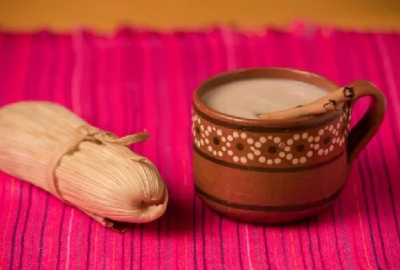
Although these drinks are typically consumed in Sonora, they are also enjoyed in other parts of Mexico. However, the preparation methods and ingredients may vary depending on the region. For example, the Yaqui ethnic group in Sonora peels and cooks the pumpkin, while in Sinaloa, it is prepared with corn flour.
It is important to note that while these drinks are delicious and highly nutritious, they should be consumed in moderation. The starch content in champurrado can cause weight gain if consumed excessively, so it is recommended to limit yourself to one serving per day.
Tejuino
Tejuino is a refreshing non-alcoholic drink that is widely consumed in Sonora and neighboring states such as Sinaloa, Jalisco, Durango, Nayarit, and Chihuahua. Its base product is sprouted corn with piloncillo or brown sugar, and it has a soft degree of fermentation. It is said that the name “tejuino” comes from the Nahuatl word “tecuín,” which means “to beat.” This name is fitting, as this drink is often served at ceremonies, celebrations, and sporting events, where it beats the heat and quenches thirst.
The origins of tejuino are not clear, but it is known that it was ingested by the Pimas and the Yaquis, two ethnic groups from the north side of the country. Today, you can find tejuino in different street stalls that are placed in parks, churches, or anywhere where a religious or traditional festival is held. It is common to consume it during these gatherings, and it is served in clay or ceramic containers by the Pima and Yaqui ethnic groups in their ceremonies.
To make tejuino, nixtamalized dough is mixed with piloncillo and left to ferment with water for a few days. The resulting content can look dark or white, depending on the sugar used. Once it is ready, you can serve it with a slice of lemon to enhance its taste.
Pinole
Pinole is a staple drink in Sonora that has been enjoyed by various ethnic groups for centuries. It is made from toasted cornmeal, which is then ground and mixed with various ingredients such as piloncillo, ginger, orange peel, and anise. The preparation method and flavor vary depending on the ethnicity.
For instance, the mayos cook the pinole in water and mix it with ground mesquite pods to create a drink called “pinole de pechita.” On the other hand, the Yaquis use watermelon seeds dried in the sun and toasted on griddles to make their pinole.
Batarete
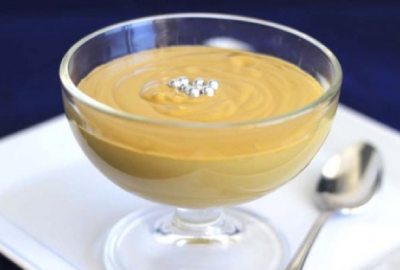
This is a delicious drink that is widely consumed in Sonora. It is made by diluting pinole, honey, and piloncillos in water, and it can be enjoyed both as a dessert and a drink. Although the origin of this dish is not fully known, it is believed to have Yaqui origins.
It is a semi-liquid preparation whose thickness varies depending on the person who prepares it and their guests. Some consider it a dessert due to its sweet and spicy flavor, while others consider it a brothy dish typical of the cold season.
Lechuguilla Mezcal
Lechuguilla mezcal is a typical drink from Sonora that is made from a wild maguey called lechuguilla. This type of agave is mainly found in the deserts of Sonora and Chihuahua. Lechuguilla water is rich in minerals and salts, which makes it a popular choice among the locals to combat gastrointestinal problems.
Compared to bacanora, another mezcal produced in Sonora, lechuguilla mezcal is made in smaller quantities and is considered of lower quality. In Sonora, distillates made from palmeri, deserti, and bovicornuta agaves are also referred to as lechuguilla.
Typical Sweets and Desserts of SONORA
Coyotas
Coyotas areone of the five most popular Sonoran desserts in Mexico. This dish is very similar to a cookie and is made with wheat flour, sugar, milk, and vegetable shortening. The filling is made with piloncillo, which is a type of brown sugar. The name “coyota” means “daughter of an Indian and Spanish,” and its origin is said to be in the Sinaloan city of Hermosillo.
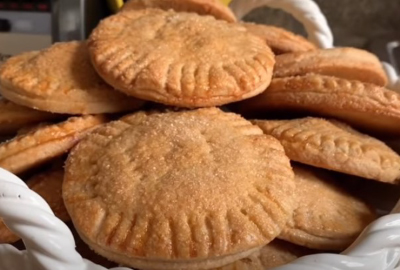
The recipe for coyota has been passed down for generations, and it has undergone some modifications in different regions of the country. However, the original recipe is made with a dough of flour, milk, and butter, which is then flattened and filled with piloncillo. The dish is then baked in a wood-fired oven to give it a smoky flavor that is characteristic of Sonoran cuisine.
Buñuelos (Fritters)
Buñuelos are a typical sweet in many countries, and Sonora is no exception. This dish is especially popular during the Christmas season, but it is also served in many of the celebrations and festivities throughout the year.
The recipe for this Sonoran dessert includes wheat flour, eggs, and baking powder. Milk and butter are also added to the mixture, and the resulting mass is then rolled into small balls and flattened using a rolling pin. The fritters are then fried until they turn golden brown on both sides.
The final touch to this dish is the special honey made with piloncillo and spices. To prepare the honey, all the ingredients are added to a pot and cooked until they acquire a chewy consistency. The fritters are then coated with the honey, resulting in a sweet and flavorful dessert that is sure to delight anyone who tries it.
Pumpkin Sweets
Pumpkin sweets are a staple dessert in Mexican cuisine, and Sonora is no exception. There are two main types of pumpkin sweets that are popular in Sonora – pumpkin candy and cubierto de calabaza (pumpkin covered candy). The main difference between the two is that cubierto de calabaza is made from a piece of pumpkin dipped in honey, while pumpkin candy is made from pureed pumpkin mixed with sugar and cinnamon. Both of these sweets are widely available in local markets and candy shops in Sonora.
Ponteduro
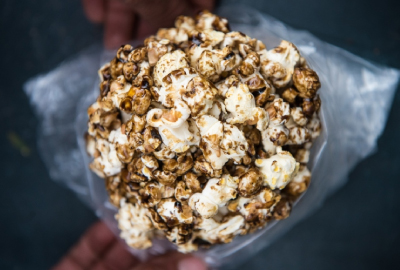
Ponteduro is a traditional Sonoran sweet that is prepared in a simple manner, but its flavor is not for everyone. This sweet is made from popcorn and piloncillo honey, which is a type of unrefined cane sugar. The mixture is then shaped into a ball, which is almost the size of an apple. Ponteduro is a unique sweet that is usually found in local markets and candy shops in Sonora.
Pitaya Ice Cream
Pitaya is an exotic fruit that is commonly found in Central America, with two main varieties – one with white flesh and yellow skin, and the other with red flesh and skin. The latter is particularly popular in the northeast of Mexico, especially in Sinaloa and Sonora. Pitaya ice cream is a refreshing dessert that is perfect for hot summer days.
The ingredients used to make this dessert include whipped cream, sugar, evaporated and skimmed milk, and of course, red pitaya. Making this ice cream is quite easy, as all you need to do is blend the chopped pitaya with the other ingredients, and freeze the mixture in a large bowl for two hours. Once frozen, beat and freeze it again before serving. Pitaya ice cream is widely available in street stands and restaurants throughout Sonora.
Palanquetas
Palanquetas are a classic Mexican sweet that is made from sugar, glucose, and roasted peanuts or nuts. In Sonora, however, the flavor of palanquetas is given a unique twist with the addition of local ingredients. Sonoran palanquetas are made with a combination of sugar, glucose, and roasted peanuts or nuts, and are widely available in local markets and candy shops.
Jamoncillo
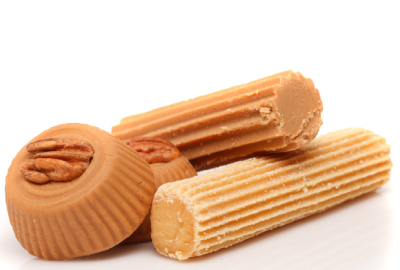
Jamoncillo is one of the traditional desserts of Sonora and Sinaloa. This sweet dish is made with milk, sugar, and chopped walnuts, giving it a light brown color. The nuts can be substituted with other ingredients in other regions of the country. For example, in provinces like Veracruz or Puebla, it is prepared with pumpkin seeds.
In Sonora, the recipe for jamoncillo includes sugar, milk, nuts, butter, vanilla, and bicarbonate. The nuts are ground into powder, and the milk, sugar, vanilla, and bicarbonate are added to a pot. The ground nuts are then stirred into the mixture until it reaches a consistent texture. The jamoncillo is then placed in molds and refrigerated until it sets.
Jamoncillo is typically consumed during the national holidays in September, and some people like to add a glass of rum to the recipe during these days. If you want to try this delicious dessert, it is readily available at any bakery in the region.
Pepitorias
Pepitorias are a traditional sweet from Sonora that is made from a combination of sesame seeds or peanuts, and pumpkin seeds. The resulting sweet is similar to peanut platelets, and is a popular dessert in Sonora. Pepitorias are widely available in local markets and candy shops, and are perfect for those who enjoy the taste of sesame seeds and peanuts.
More Tourist Attractions in SONORA
Flights & Hotels in SONORA
More Tourist Attractions in MEXICO

Beaches
On the Beaches of Mexico you can immerse yourself in the intense blue ocean of the Pacific bays, sunbathe on the shore of the warm and transparent waves of the Caribbean Sea in Quintana Roo or even rest on the beautiful coasts of the Gulf of Mexico. Mexican beaches hide wonderful secrets for the traveler. By visiting them, in addition to enjoying the excellent climate and water activities, you can discover splendid archaeological sites and interesting colonial cities without traveling long distances.… Read More

Gastronomy
The Gastronomy of Mexico has a great diversity of typical dishes, which is why it was recognized by UNESCO as Intangible Heritage of Humanity. The basic and representative ingredients of Mexican dishes are: corn, coriander, chili, beans, piloncillo, nopal and tomato. Mexican cuisine is also characterized by its sauces, which serve as an accompaniment to traditional dishes, prepared based on spices.… Read More

Ecotourism and Adventure
Mexico is one of the best countries for Ecotourism as it has a great variety of flora and fauna, as well as a large number of refuges for extraordinary species. You can enjoy recreational activities of appreciation and knowledge of nature through contact with it, such as: stargazing, observation of natural attractions, wildlife and bird watching. Throughout México there are more than 176 protected natural areas, 5 of them considered by UNESCO as Natural Heritage of Humanity. Just for this and much more, we believe that Mexico is a Paradise for Ecotourism.… Read More

Archaeological Sites
The Archaeological Zones are the cultural past of every Mexican. You will be amazed at the ambient, nature and the environment that surrounds them. Climbing to the top or being around it will take us back in time to admire every detail. México is a country of culture and traditions, many of which we have inherited from the pre-Hispanic inhabitants of this vast territory, although it is true that there were more settlements in the central and southern part of the country, it is also possible to find some archaeological remains in the north.
… Read More

Capital Cities
Folklore, gastronomy, literary culture, art and exhibitions, is what you will find in the capitals of the states of Mexico. To the north, colonial Mexico, Puebla, Guadalajara, Guanajuato, the Sonoran desert and the California peninsula. To the east Veracruz and the gulf. To the west Acapulco, Oaxaca and Tuxtla Gutiérrez. And to the south the Riviera Maya and the pyramids of Chichén-Itzá, Tulúm and Cobá in Yucatán, Palenque in Chiapas, the cenotes, and the Central American jungles.… Read More

States Of Mexico
Mexico has an incredible diversity of landscapes, where the beauty of its beaches, internationally recognized, stands out. In its vast territory of coasts, there are beaches of unparalleled beauty, and colorful landscapes. A large network of first-class hotels and tourist services is available to visitors to these beaches. Mexico is also mystical places, dotted with archaeological testimonies inherited from its original inhabitants. Monuments made by the Mayas, Aztecs and Toltecs are located in magical landscapes, like lighthouses in an ocean of natural beauty. They offer visitors buildings that tell their history, and museums that collect their cultural heritage. And that keep alive ancestral traditions, in ceremonies and festivals, where you can enjoy cultural activities and entertainment.… Read More

Traditions in Mexico
It is practically impossible to make a meticulous, and above all, accurate selection of the places to visit in Mexico. Each place that our country houses is unique and beautiful in its own way. Mexico, with its nearly 2 million km², has a large number of scenarios to offer, as well as endless activities to do. Do not lose your way and enter the places to visit in Mexico. In Mexico, apart from the beaches and its famous archaeological sites, there are many other really interesting sites and activities that you should know. In the surroundings of the main cities you will find places full of culture and tradition, where you can spend relaxing, interesting and fun vacations. On your trip through Mexico you cannot stop obtaining souvenirs, the crafts that are made here are of the highest quality and recognized worldwide. A shopping tour cannot be missed.… Read More

Magical Towns
A Magical Town is a place with symbols and legends, towns with history that in many cases have been the scene of transcendent events for our country, they are places that show the national identity in each of its corners, with a magic that emanates from its attractions ; visiting them is an opportunity to discover the charm of Mexico. The Magical Towns Program contributes to revalue a set of populations in the country that have always been in the collective imagination of the nation and that represent fresh and varied alternatives for national and foreign visitors. A town that through time and in the face of modernity, has conserved, valued and defended its historical, cultural and natural heritage; and manifests it in various expressions through its tangible and intangible heritage. A Magical Town is a town that has unique, symbolic attributes, authentic stories, transcendent events, everyday life, which means a great opportunity for tourist use, taking into account the motivations and needs of travelers.… Read More

